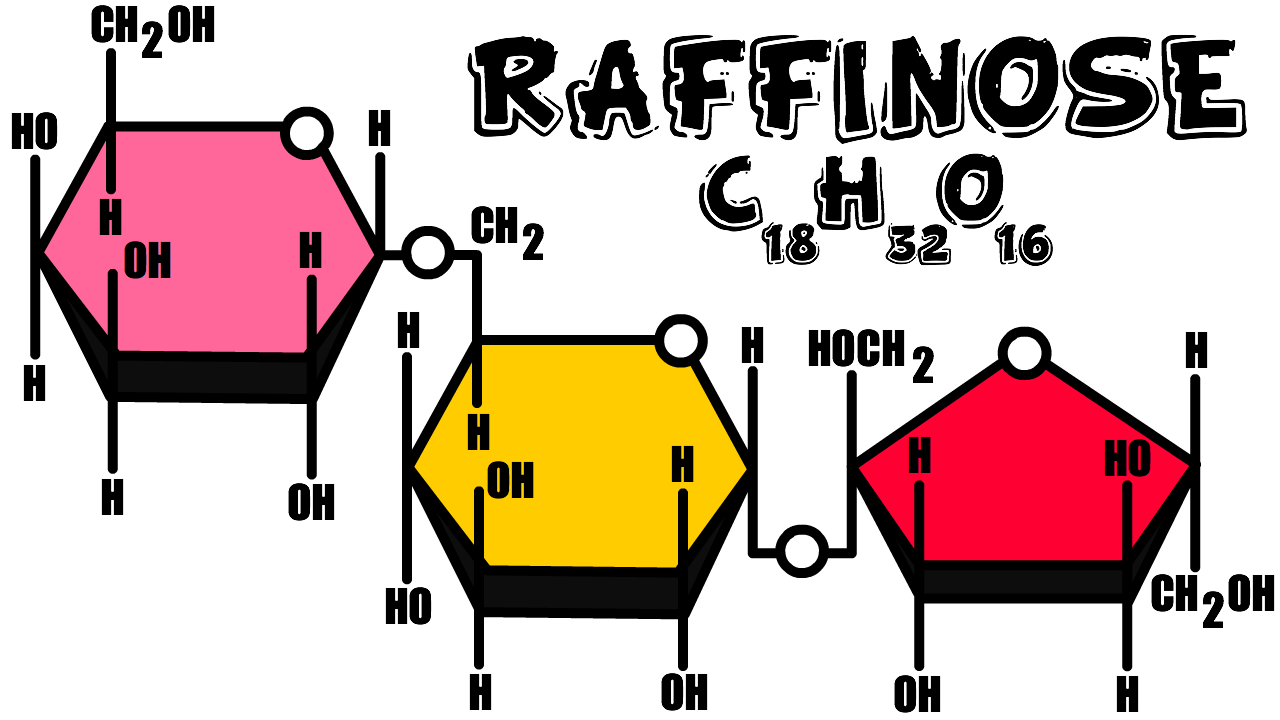
Take a moment to understand what fuels your body - it's worth your time!
Luckily, you don't need to be nor have a dietitian to vastly improve your own health. The rabbit hole that is nutrition science can be daunting, but a few basic principles and some ratios are really all you need!
MACRONUTRIENTS
By definition, macronutrients are needed by the body in relatively large amounts. There are 3 types: Carbohydrates, Protein, and Fat. There are further classifications of macros, especially once our bodies start to break them down in to even simpler components, but we'll start here to make it easy on ourselves.
Function
Carbohydrates serve as the body's preferred energy source providing 4 calories per gram. In fact, carbs are the ONLY energy source for the brain and red blood cells. When carbs are readily available our bodies can spare protein to be used for other vital tasks. Carbs are stored in the body as glycogen. Along with fighting off fatigue, carbs also assist with cardiovascular and digestive health in addition to providing flavor to foods. As you can see, there isn't much they don't do so it's an oversimplification to call carbs flat out GOOD or BAD.
Structure
Carbohydrates are built from chains of monosaccharides. These are sugar compounds made of carbon and water (hydrogen and oxygen), which are abbreviated as CaHbOc. There are 2 categories of carbs: Simple and Complex.
Simple - Monosaccharides ~ C6H12O6
There are 3 monosaccharides found in nature that can be absorbed and used by the human body

Glucose: Predominate sugar in nature and the basic building block of most other carbs.
Fructose: Sweetest of the monosaccharides found at varying levels in different types of fruit.
Galactose: Similar in structure with glucose with which it combines to make lactose.
Simple - Disaccharides ~ C12H22O11
Monosaccharides are rarely found FREE in nature and are usually bound together as disaccharides

Maltose: Glucose + Glucose; least abundant in the food supply made from digestion of starch.
Lactose: Glucose + Galactose; primary ingredient in the milk of mammals.
Sucrose: Glucose + Fructose; "Table Sugar" available commercially via sugarcane and sugar beets.
Complex - Oligosaccharides
An ogliosaccharide is a chain of approximately 3 to 10 simple sugars (i.e., monosaccharides). A common example is Fructooligosaccharides, a category of oligosaccharides found in fruits and vegetables. They are mostly indigestible, help relieve constipation, improve triglyceride levels, and decrease production of foul-smelling digestive by-products. Below is an example of Raffinose, composed of galactose, glucose, and fructose. It can be found in beans, cabbage, brussels sprouts, broccoli, asparagus, other vegetables, and whole grains.

Complex - Polysaccharides
Don't expect a detailed structure diagram here, there could be HUNDREDS of simple sugars bound together to form polysaccharides. Instead, they can be grouped further into three categories.

Fiber: Fiber is classified as Functional Fiber and Dietary Fiber. Together, they comprise Total Fiber. Functional fibers are isolated, nondigestible carbohydrates available as both natural and synthetic dietary supplements and can be added to foods. Dietary Fibers are naturally found in certain foods and can be further classified as High Viscous/Soluble or Low Viscous/Insoluble. Soluble Fibers slow gastric emptying which increases feelings of fullness. Insoluble Fibers play an important role in increasing fecal bulk and provide a laxative effect.
Starch: A plant carb found in vegetables and grains. There are two types of starch. Amylose is a small, linear molecule of tightly packed glucose molecules that is mostly resistant to digestion. Amylopectin is a larger, highly branched chain of glucose molecules that is easily digested.
Glycogen: A source of energy for the body, glycogen is a large multi-branched chain of glucose molecules. Animals, including humans produce glycogen which is made and stored in the liver and muscles.
Recommendation
The National Academy of Medicine prescribes Acceptable Macronutrient Distribution Ranges(AMDR) for carbohydrates, fat, and protein. ADMRs are associated with reduced risk for chronic diseases while still providing adequate intake of nutrients. For carbohydrates, the AMDR is 45% to 65% of total calories. The current recommended dietary allowance(RDA), defined as the amount of nutrients known to be adequate to meet the nutritional needs of nearly all healthy persons is 130g per day. Remember, this amount is the MINIMUM daily requirement of carbs needed for the brain. For energy maintenance, the body will need even more depending on the level of activity. There are also specific recommendations for fiber; unfortunately, most American consume far less than the 25 to 35 grams per day necessary for most adults. For children older than 2, the fiber intake goal is their age plus 5 grams per day. For example, if little Billyboba Juwanna is 7 years old, his fiber intake goal is 12g.
Choosing Quality Carbohydrates
Simple vs Complex: Previously, the quality of a carbs was thought to be determined by its category. Simple carbs were seen as "Bad" because they digest faster and subsequently spike blood glucose levels. Complex carbs were seen as "Good" because they break down at a slower rate having less of an effect.There some truth behind these statements but it's still an oversimplification. Carbohydrate quality should be determined by considering the food's overall nutrient value, effect on blood glucose levels and extent of processing. There's no one formula to determine carb quality but you'll find common proxies used by health experts on the Food Page.
Function
Proteins form the major structural components of not only muscles, but also that of the brain, nervous system, blood, skin and hair. This macronutrient is the transport mechanism for iron, vitamins, minerals, fats, and oxygen within the body serving as the key to acid-base and fluid-balance. Proteins form enzymes that speed up chemical reactions and create antibodies to fight infection. In situations of energy deprivation, the body can break-down proteins for energy which, like carbs, provide 4 calories per gram.
Structure
Proteins are composed of long chains of amino acids linked by peptide bonds. The order in which the animo acids are linked together is called the primary structure which dictates the final structure and function of a protein. The primary structure is coiled or pleated into its secondary structure. The coil or pleated strand is then looped into its tertiary structure. Multiple tertiary structures can be bound together to make the final quaternary structure.

All proteins are made up of some combination of amino acids. There are nine essential amino acids, meaning they cannot be made by the body and must be consumed in the diet. There are six conditionally essential amino acids, that can be synthesized in limited amounts under certain pathophysiological conditions. There are six nonessential amino acids that are made by the body and do not need to be consumed through the diet.

Protein Types
WHEY: One of the two major milk proteins, whey is the liquid remaining after milk has been curdled and strained. There are three varieties, all of which provide high levels of essential and branched chain amino acids like leucine, isoleucine and valine. First, Whey Protein Powder - 11-15% protein, used as an additive in many food products. Second, Whey Protein Concentrate - 25-89% protein, used in dietary supplements. Third, Whey Protein Isolate - 90+% protein, also used supplements. Unlike the other whey forms, Isolate is lactose-free but proteins can be lost during the manufacturing process. Whey's high level of leucine make it ideal for muscle hypertrophy (excessive growth). It is easily digested and absorbed and has a remarkable ability to stimulate muscle protein synthesis.
CASEIN: Giving milk its white color, casein accounts for 70-80% of milk protein. It exist as micelle,a soap sud like compound.The micelle is broken down in the stomach and casein is released . Digestion is slow due to the aggregation of casein, allowing the protein to provide a sustained slow release of amino acids into the bloodstream. Studies suggest that combined casein and whey may produce the greatest muscular strength improvements after an intensive resistance training program.
SOY: The most widely used vegetable protein, soy is one of the only vegetable proteins with all essential amino acids. The three branch chain amino acids - leucine, isoleucine andvaline - have been shown to reduce the breakdown of muscles during exercise. It exist in 3 forms like whey - Flour (50%), Concentrates (70%), and Isolates (90%). Soy foods are thought to be heart healthy due to high content of polysaturated fats, fiber, vitamins, and minerals and low levels of saturated fat.
Recommendation
For Protein, the AMDR is 10% to 35% of total calories. The current recommended dietary allowance(RDA) is 0.8g/kg/day (.36g/lb/day). Remember, this amount is the MINIMUM daily requirement of protein, athletes require much higher levels of protein.
Choosing Quality Proteins
A specific food's protein quality is determined by assessing its essential amino acid composition, digestibility, and bioavailability, meaning the degree to which a nutrient can be absorbed by the body. Generally, animal products contain all of the essential amino acids called "complete proteins". Plant foods do not and are called "incomplete proteins". Notable exceptions include soy, quinoa, chia seeds, buckwheat, and flax seeds which are plant-based complete proteins. The Protein Digestibility Corrected Amino Acid Score (PDCAAS) is the most accepted and widely used measure of protein quality. Calculating PDCAAS is somewhat complicated but essentially it gives each protein food a score, 1.0 being the highest. This score means that after digestion the test protein provides the body with 100% of the essential amino acids. As a reference - Casein, egg, milk, whey, and soy proteins have a score of 1.0. Other examples include: Beef (0.92), Black Beans (0.75), and Peanuts (0.52). See more on the Food Page.
Function
The most energy-dense of the macronutrients, fat provides 9 calories per gram, more than twice that of carbohydrates and protein. Fat serves many critical functions in the body including insulation, cell structure, nerve transmission, vitamin absorption and hormone production. It's important to note that the the term lipids is sometimes used interchangeably with fat. To clarify, the main difference between lipids and fats is that lipids are a broad group of biomolecules whereas fats are a type of lipids. The major classes of lipids that are important for the human function are cholesterol, fatty acids and triglycerides.
Structure
Cholesterol
Cholesterol is a fat-like, waxy substance produced in the liver and found in the cell membranes of all animal tissues. It can also be found in the adrenal glands, testes, ovaries and is used to make hormones and vitamin D. It also plays a role in digestion. Because cholesterol is fat soluble, it needs water-soluble carrier proteins called lipoproteins to transport it in the bloodstream. There are two major classes of lipoproteins.

Low-Density Lipoproteins (LDLs): Cholesterol is transported in the blood to the body cells primarily as LDL. LDLs are susceptible to oxidation which cause them to distribute cholesterol to the inner linings or walls of arteries and may form a plaque and ultimately leading to health problems.
High-Density Lipoproteins (HDLs): Conversely, HDLs remove excess cholesterol from the arteries and carry it back to the liver, where it is secreted.
Fatty Acids & Tryglycerides
Dietary fat consists mostly of tryglycerides - a compound of three fatty acids attached to a glycerol (carbon and hydrogen) backbone. Most fat exists in food and body in this chemical form. Fat is primarily stored as tryglycerides in adipose tissue. Once thought to be simply a place for energy storage, adipose tissue is now recognized as a metabolically active endocrine organ that produces hormones. Fatty acids are long chains of hydrocarbon chains with an even number of carbons and varying degrees of saturation with hydrogen.The three major categories of fatty acids are saturated, monounsaturated, and polyunsaturated.

Saturated Fatty Acids: No double bond, all carbons saturated with hydrogen, solid at room temperature. Very stable/long shelf life, 4 types - lauric, myristic, plamitic &stearic. Sources include Red meat,dairy, palm and coconut oil. Saturated fats raise LDL cholesterol.
Monounsaturated Fatty Acids: One double bond, liquid at room temp, found primarily in plants and are very unstable. They are more susceptible to oxidation resulting in a short shelf life. Oleic acid is a monounsaturated fatty acid that lowers Total and LDL cholesterol in place of saturated fats.
Polyunsaturated Fatty Acids: More than one double bond, research suggest they are the healthiest of fats. Two essential types which reduce blood clots and inflammation. Omega-3(alpha-linoleic acid) found in include salmon and other fish. Omega-6(linoleic acid) found green leafy vegetables, canola and soybean oils, and flaxseeds.
*Trans Fat*: Made from a process called hydrogenation, which converts an unsaturated fat into a saturated fat by replacing the double bond with hydrogen. Th end result creates what we call a "synthetic" or "industrial" trans fat. Trans fat are solid at room temperature and therefore more resistant to oxidation and more shelf stable. Most of all, they're cheap. However, trans fat negatively affect phospholipids and can hurt cell function. The process also interferes with heart-healthy properties. Food manufacturers are required to include trans fat on labels.
Recommendation
For Fat, the AMDR is 20% to 35% of total calories. The adequate intake (AI) for omega-3 is 1.6 g and 1.1 grams per day for men and women, respectively. For omega-6, the AI is 17 grams and 12 grams for men and women, respectively. Monosaturated facts should account for 15% to 20% of total calories. Less than 10% should come from saturated fats. Trans fats should be strictly avoided! See more on the Food Page
MICRONUTRIENTS
Micronutrients, by definition, are only needed in small amounts. The World Health Organization refers to these nutrients as the "magic wands" that enable the body to produce enzymes, hormones, and other substances that are essential for proper growth and development. When the body is deprived of or excessively overloaded with micronutrients, the consequences are severe. But when the micronutrients are consumed in the right amounts through a varied, balanced and nutrient-rich diet, vitamins and minerals contribute to optimal health, function and well-being.
Vitamins are organic, noncaloric micronutrients that are essential for normal physiological function. No "perfect" food contains all the vitamins in just the right amount. Instead, a variety of nutrient dense foods must be consumed to ensure adequate vitamin intake. Some foods contain inactive vitamins, which are called provitamins. The human body contains enzymes to convert these inactive vitamins into active vitamins. Humans need 13 different vitamins, which are divided into two categories: water-soluble and fat-soluble.

Minerals serve many critical rolls; however, unlike vitamins, many minerals are found in the body as well as in food. The body's ability to use the mineral is dependant upon their bioavailiblity, or degree to which the mineral can be absorbed by the body. Nearly all minerals, with the exception of iron, are absorbed in their free form-that is, in their ionic state unbound to organic molecules and complexes. When bound to a complex, the mineral is not bioavailable, and will be excreted in feces.
Minerals are typically categorized as macrominerals (major elements) and microminerals (trace elements). Macrominerals are essential for adults in amounts of 100 milligrams per day or more. Microminerals are found in amounts less than 20mg per day in the body.

WATER
Water is the single largest component of the human body, accounting for approximately 50% to 70% of body weight. Water has many important functions , including regulating body temperature, protecting vital organs, providing a driving for nutrient absorbtion, serving as a medium for all biochemical reactions, and maintaining a high blood volume for optimal athletic performance.
Water volume can be influenced by a variety of factors such as food and drink intake; sweat, urine, and feces excretion; metabolic production of small amounts of water; and losses of water that occur with breathing. The recommendation is the same for everyone, regardless of activity level - 1:1 for how much water you gain:lose.

0%: Normal Performance
2%: Impaired Thermoregulatory Ability
4%: Reduced Muscular Endurance Time
6%: Reduced Muscular Strength, Reduced Endurance Time, Heat Cramps
8%: Severe Heat Cramps, Heat Exhaustion, Heatstroke, Coma, Death
Sodium, potassium and chloride are electrolytes - macrominerals that exist as ions in the body and are extremely important for normal cellular function. All three play at least four essential roles in the body: water balance and distribution, osmotic equilibrium and intracellular/extracellular differentials. Dehydration is bad in itself but hyponatremia should also be avoided by ensuring adequate intake of sodium and other electrolytes.
Calorie Counter
Estimated Daily Calories:
Carbohydrate AMDR:
Protein AMDR:
Fat AMDR:
These estimates were calculated using the Mifflin St. Jeor Equation. There is no ONE method of calculation for calorie needs but this equation is known for being the most accurate. That being said, there are 7 billion plus people on this planet, that leaves a lot of room for variation in dietary patterns. Furthermore, trying to replicate an experiment with a perfect control group that includes something as arbitrary as our stomachs, is virtually impossible. These averages are useful but not definitive. For more information on different diets, check out the Food Page.
Copyright © 2020-2022 GLY LLC
All rights reserved.